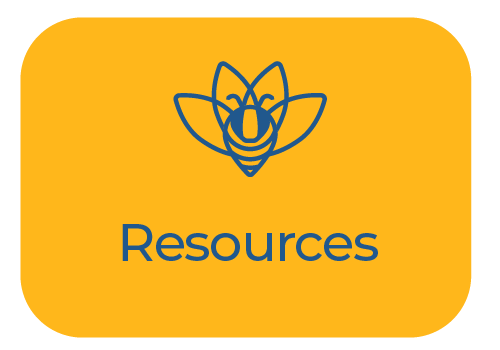Pollinator Conservation: Do It Yourself
“Bee” A Pollinator Protector!
Much of the food we eat, the materials we use and even medicines we need wouldn’t exist without the help of insect pollinators. Unfortunately, pollinator populations all over the world are decreasing due to pesticide use, habitat destruction and disease. Gardens are a great way to help local pollinator populations.
Don’t Use Pesticides.
If you spray poison to get rid of pesky plant-eaters, you may end up getting rid of your pollinators. By emphasizing good plant health care and using other methods of pest management, you can create a healthy habitat for pollinators and other beneficial insects.
Provide Trees, Shrubs and Groundcovers for Shelter.
A layered garden, with plants of different heights, creates safe haven for a variety of pollinators. Some smaller insects rely on groundcovers for protection from the elements and predators. Butterflies often roost in trees or shrubs overnight. Many plants can serve “double duty” and provide shelter and food at the same time.
Plant Flowers that Provide Nectar.
Different pollinators usually visit different plants based on their body size, foraging behavior and sensory capabilities, but all are looking for nectar or some other important resource. So, think of a diversity of flowers as not only pleasing to the eye, but as a buffet for pollinators of all stripes.
Plant in Clumps for Easier Foraging.
Bees and butterflies will often focus on one species of flowering plant until they reach an empty flower. This routine requires less energy and makes it easier to find food. Gardens that have several plants of the same species clumped together are more attractive to hungry pollinators.
Deadhead Old Flowers to Produce New Flowers.
Flowers, of course, usually lead to fruit and seeds; this requires a great deal of energy from the plant. If gardeners snip off old flowers before the plant makes an investment in seed production, the plant will often put that energy into more flowers.
Extend the Blooming Season.
With Colorado’s tricky weather, pollinators may forage from March through November. Early bloomers like small bulbs, lilacs and chives can begin your garden’s flowering season, which can end with rabbitbrush and goldenrod in the fall.
Plant Native Plants for Specialized Pollinators.
Our native pollinators have adapted over generations to the plants that originally grew along the Front Range. Foreign plants may not have the same enticements or have the same ease of access. Gardens with native plants, such as Rocky Mountain beeplant and rabbitbrush, really are minihabitats.
Learn about the “Forgotten Pollinators.”
Bees and butterflies are often the first pollinators to come to mind, but insects such as soldier beetles and hover flies also provide an important service. After learning about some of these other heroes of the garden, you might see your yard, and its inhabitants, in a whole different light.







